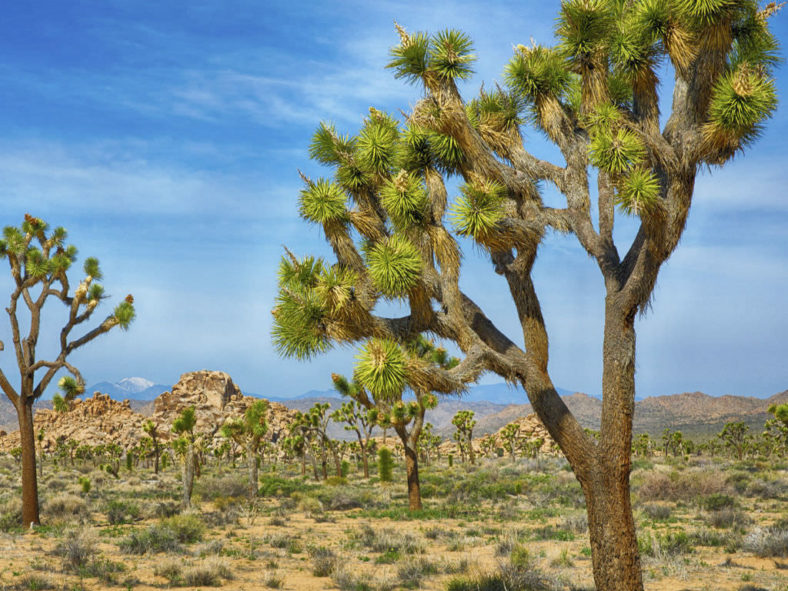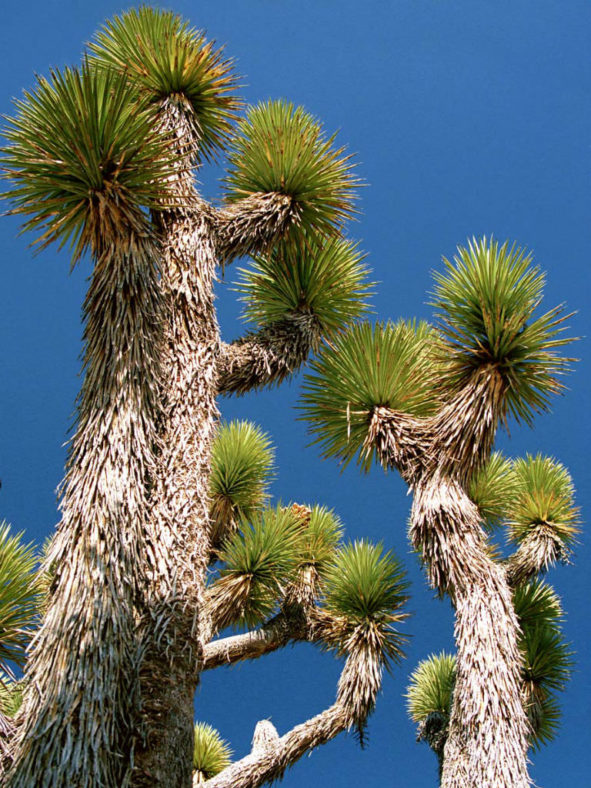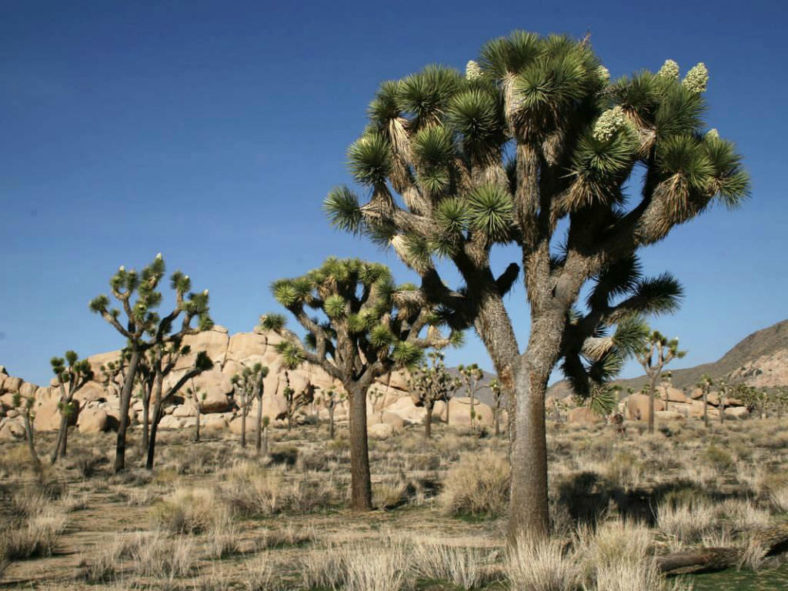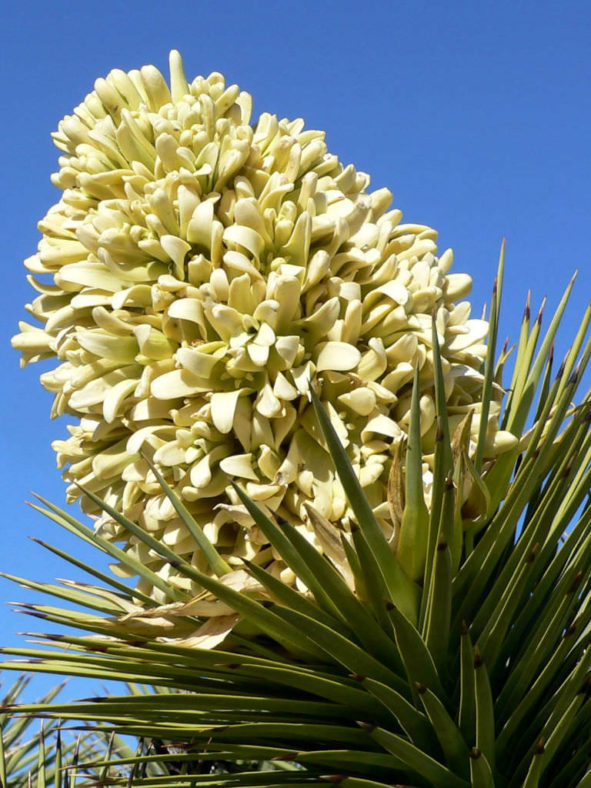Scientific Name
Yucca brevifolia Engelm.
Common Name(s)
Joshua Tree, Yucca Palm, Tree Yucca, Palm Tree Yucca
Synonym(s)
Clistoyucca brevifolia, Sarcoyucca brevifolia
Scientific Classification
Family: Asparagaceae
Subfamily: Agavoideae
Genus: Yucca
Origin
Yucca brevifolia is native to the arid southwestern United States. It occurs in California, Arizona, Utah, and Nevada, where it is confined mainly to the Mojave Desert on open, rocky grasslands at elevations between 1,300 and 5,900 feet (400 and 1,800 m.
Description
Yucca brevifolia is a picturesque tree with a columnar, distally branched trunk with stiff, narrow, sharply pointed leaves clustered in dense rosettes at branch tips, forming an open crown. It grows relatively slowly to 50 feet (15 m) tall. Branches are up to 10 feet (3 m) long. Leaves are bayonet-shaped with small serrations along the margins, up to 14 inches (35 cm) long and 0.6 inches (1.5 cm) wide. They are green with yellow margins. The desiccated leaves remain on the plant, covering the trunk and branches.
The flowers are bell-shaped, up to 2.8 inches (7 cm) long, with six greenish-white to cream-colored tepals, and appear in terminal panicles in spring. The panicles are up to 22 inches (55 cm) tall and up to 15.2 inches (38 cm) in diameter. Fruits are ellipsoid, deeply furrowed, up to 3.4 inches (8.5 cm) long, and contain dull black seeds.

Hardiness
USDA hardiness zones 6a to 10b: from −10 °F (−23.3 °C) to 40 °F (+4.4 °C).
How to Grow and Care
Under the right conditions, Yuccas are not difficult plants to grow. They tend to thrive on a bit of neglect rather than too much attention. They are especially easy to overwater, and soggy stems are a sign of too much water. The best conditions for Yuccas include a sunny corner with relatively low humidity. They are not prone to many pests, although scale can be an issue. Over time, plants will typically lose their lower leaves (in nature, they droop, forming a skirt around the trunk), giving the plant a pleasant "tree-like" appearance.
Yuccas are relatively slow-growing plants that should only need to be repotted every other year. They do well, slightly pot-bound, as long as they don't become heavy enough to tip over their containers. Repotting larger plants can be difficult, so larger plants can be refreshed with new potting soil by digging out the top 2 inches (5 cm) of the container and adding new soil. During typical repotting, remove the plant from its container and go up one container size. Always use fresh potting soil.
Learn more at How to Grow and Care for Yucca.
Links
- Back to genus Yucca
- Succupedia: Browse succulents by Scientific Name, Common Name, Genus, Family, USDA Hardiness Zone, Origin, or cacti by Genus
Photo Gallery
Click on a photo to see a larger version.


